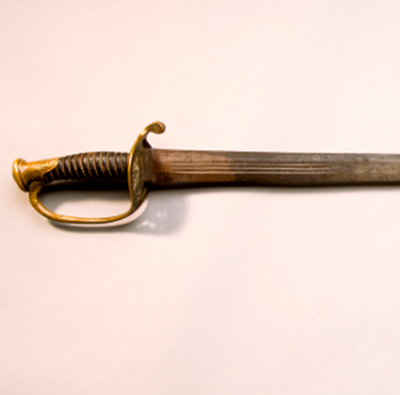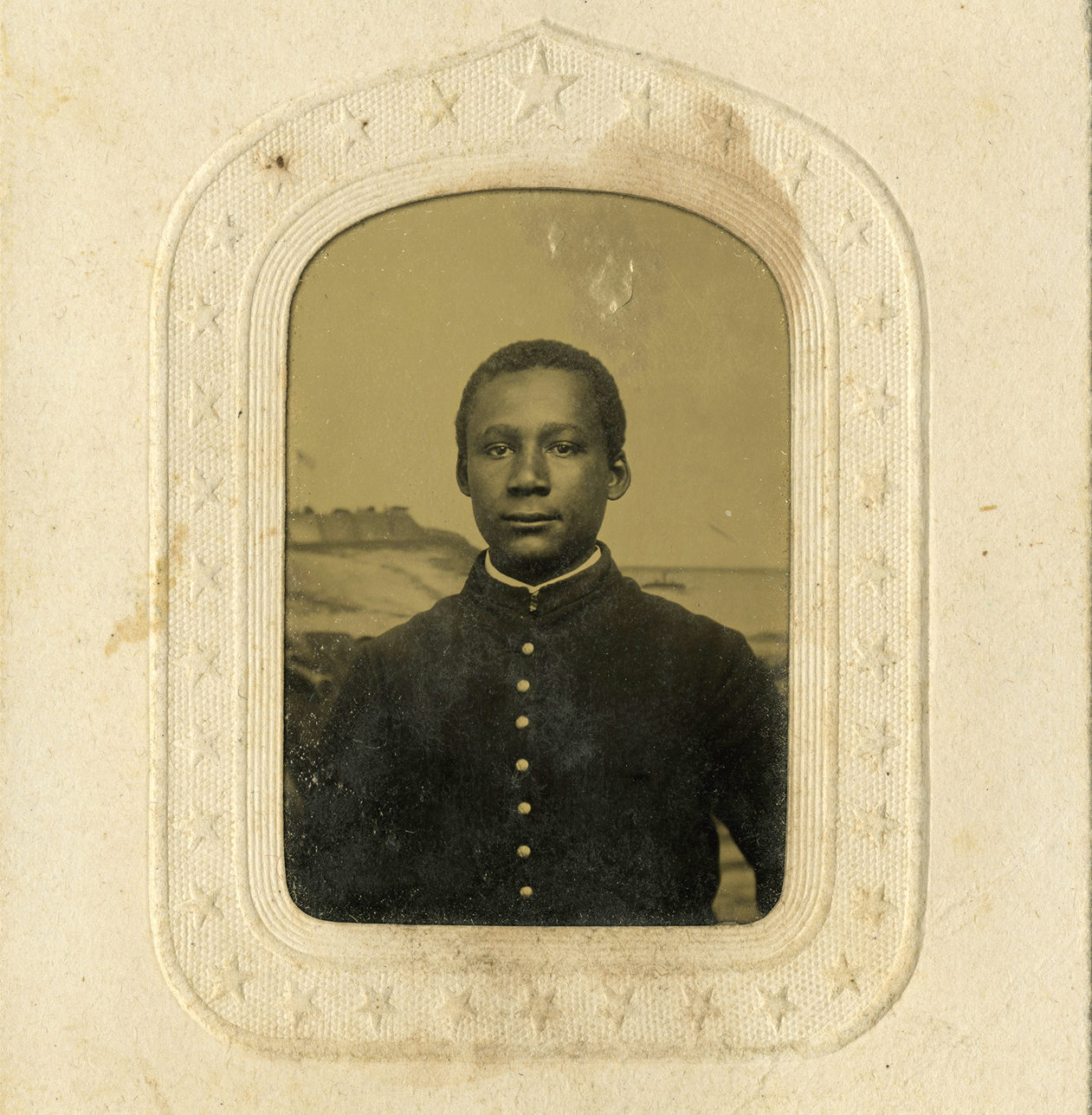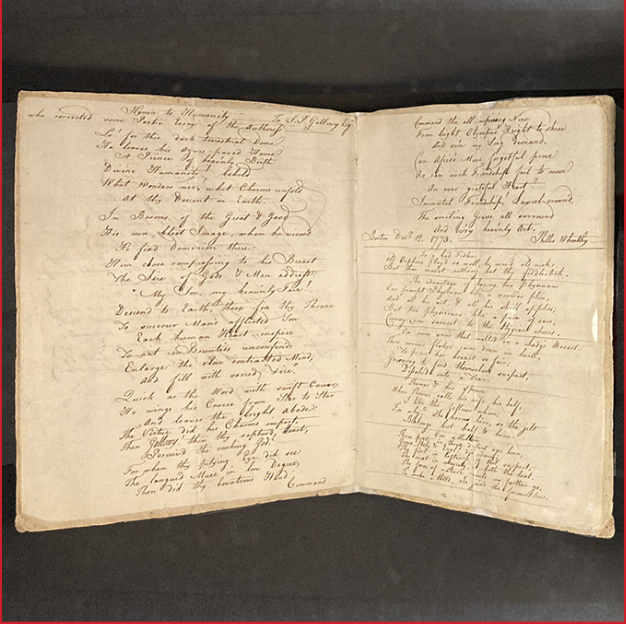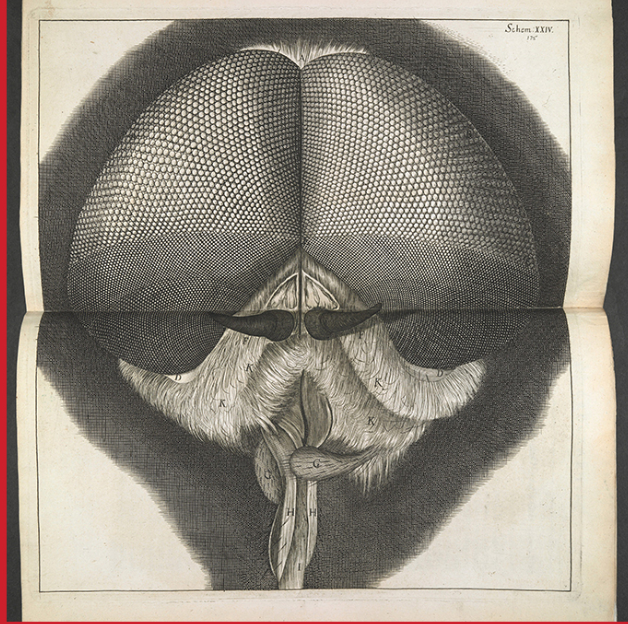
Confederate States of America Officer’s Sword

Stuart A. Rose Manuscript, Archives, and Rare Book Library
African American Collections
Photograph of William H. Scott in uniform and Confederate States of America Officer’s Sword
William H. Scott family papers
William H. Scott was born a slave in Virginia on June 15, 1848. He escaped and joined the Union Army’s 12th Massachusetts Volunteer Infantry Regiment. During a lull in the fighting at the Battle of Fredericksburg, Scott reportedly retrieved this Confederate sword.
Scott was ordained a Baptist minister in 1880. An advocate for African American rights, Scott founded the Massachusetts Racial Protective Association in 1886 and he was one of 29 original members of the Niagara Movement, predecessor to the National Association for the Advancement of Colored People (NAACP).
How will you respond in the face of injustice and inequality?

Poem: A Hymn to Humanity

Rose Library – Literary and Poetry Collections
Phillis Wheatley
1 of 2 of her copybooks housed in Rose Library
Poem: A Hymn to Humanity, December 12, 1773
from the Phillis Wheatley collection, 1757-1773
The poet Phillis Wheatley (1753-1784), seized from her home in Senegal/Gambia in West Africa when she was seven, was a slave who was purchased by John Wheatley of Boston, Massachusetts. In 1773, her only book, Poems on Various Subjects, Religious and Moral, containing thirty-eight poems, was published in London. She was the first African American, and second American woman, to publish a collection of poems.
This poem, in her own hand, was first published in Poems on Various Subjects. This variant features significant textual changes and identifies for the first time who the poem was dedicated to.
What are some of the numerous barriers Wheatley had to break through to publish her collection of poems?
Photograph of Elena with a Portrait of Her Son Ricard

Political, Cultural, and Social Movement Collections
Billy Howard
Photograph of Elena with a Portrait of Her Son Ricardo
Gelatin Silver print
Billy Howard photographs
Atlanta photographer Billy Howard began photographing people with Human Immunodeficiency Virus/Acquired Immune Deficiency Syndrome (HIV/AIDS) in 1987. At the time, there was no effective treatment for the disease — people diagnosed with it faced the potential of an agonizing death, as well as stigmatization, discrimination, and isolation because of fears about the disease. Once Howard printed the portraits, he asked the individuals to write on them a message about living—and dying—from HIV/AIDS. In this photograph, Elena Treto held a portrait of her son Ricardo Llera, who died of AIDS in 1986. The text recounted parts of her conversations with Ricardo during the last year of this life.
Howard’s portraits and the subjects’ honest words gave distinct faces and voices to the harrowing statistics of the HIV/AIDS pandemic.
What would you use to illustrate the human dimension of the current pandemic?
Micrographia, or, Some Physiological Descriptions of Minute Bodies Made by Magnifying Glasses: with Observations and Inquiries thereupon, London, 1665

Rare Book Collection
Micrographia, or, Some Physiological Descriptions of Minute Bodies Made by Magnifying Glasses: with Observations and Inquiries thereupon, London, 1665
Robert Hooke (1635-1703)
Published under the auspices of the Royal Society, Robert Hooke’s Micrographia is the first work to show images of plants and insects as viewed under a microscope, including a famous illustration of a fly’s eyes. Hooke coined the term “plant cell” as they reminded him of the cells of a honeycomb. Those who viewed the volume’s illustrations were astonished.
When was the last time you were astonished about scientific discovery?
